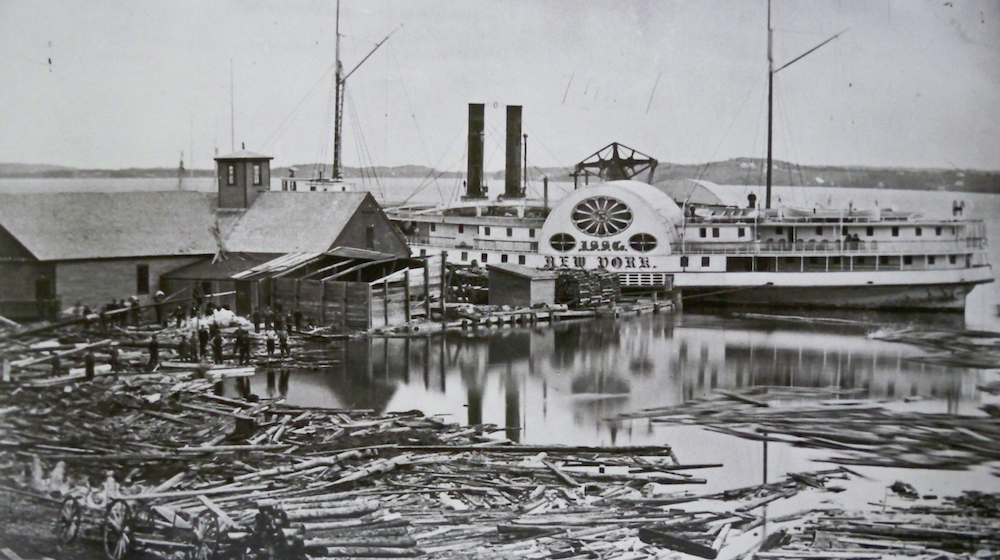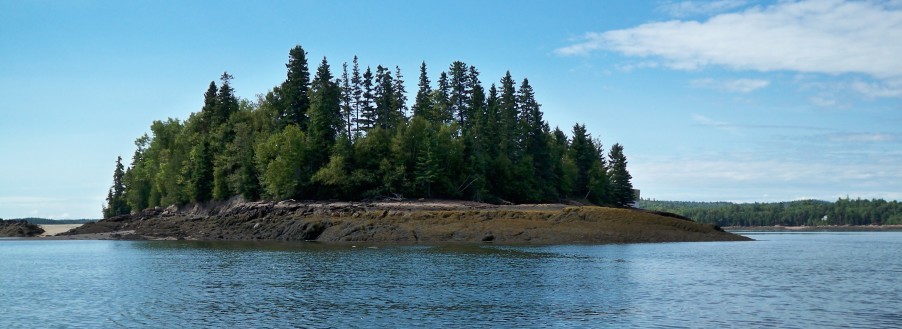The Cultural Landscape of the St. Croix River
 In 2010-2011, Rod Mather and John Jensen of the Applied History Lab started working with the Northeast Region of the National Parks Service (NPS) on a study of the maritime heritage resources at the Saint Croix Island International Historic Site (SACR) in Maine. Established as a national monument in 1949, Saint Croix Island's most significant historic resources are associated with the abortive French settlement of the island in 1604-1605. Archaeological work at the park began in the 1950s and has, until recently, focused almost exclusively on the island’s brief history of French occupation. Recent archaeological work at Saint Croix, however, has been more comprehensive and holistic. The latest studies have looked at the long periods of Native American occupation and use that date back at least 3500 years, the 19th century Euro-American settlement of the island, and the industrial development of Park properties along the shore at Red Beach.
In 2010-2011, Rod Mather and John Jensen of the Applied History Lab started working with the Northeast Region of the National Parks Service (NPS) on a study of the maritime heritage resources at the Saint Croix Island International Historic Site (SACR) in Maine. Established as a national monument in 1949, Saint Croix Island's most significant historic resources are associated with the abortive French settlement of the island in 1604-1605. Archaeological work at the park began in the 1950s and has, until recently, focused almost exclusively on the island’s brief history of French occupation. Recent archaeological work at Saint Croix, however, has been more comprehensive and holistic. The latest studies have looked at the long periods of Native American occupation and use that date back at least 3500 years, the 19th century Euro-American settlement of the island, and the industrial development of Park properties along the shore at Red Beach.
Employing the cultural landscape approach (CLA) to maritime heritage resources, the AHL study illustrated the rich water-related history of human habitation on the river. The results highlighted the centrality of the site for the extraction of natural resources as well as for fresh- and saltwater borne trade. From this perspective, the superiority of Saint Croix Island and its surrounding environs as locations for human occupation was made manifest. For Etchemin, Wabanaki, 17th century French colonists, and 19th century fishermen and lumbermen, the St. Croix River region offered access to abundant living resources, excellent travel and communication networks, and the potential for sustained economic prosperity.
 The cultural landscape of the St. Croix region was strongly influenced by 19th century industrialization, lumber extraction, shipbuilding, maritime commerce and fishing. At one point in the 19th century, a thousand lumber ships per year transited the St. Croix River. Cultural material from this period survives all along the river, and can be found in the coastal and intertidal portions of Saint Croix Island and Red Beach. While not all of this material demands preservation, as a collection and it conveys important layers of information about the human uses of the region, and the resulting transformations in the condition of the region’s natural environment and cultural landscapes.
The cultural landscape of the St. Croix region was strongly influenced by 19th century industrialization, lumber extraction, shipbuilding, maritime commerce and fishing. At one point in the 19th century, a thousand lumber ships per year transited the St. Croix River. Cultural material from this period survives all along the river, and can be found in the coastal and intertidal portions of Saint Croix Island and Red Beach. While not all of this material demands preservation, as a collection and it conveys important layers of information about the human uses of the region, and the resulting transformations in the condition of the region’s natural environment and cultural landscapes.
The extent of submerged archeological material under NPS jurisdiction at SACR remains undetermined. The possibility exists that submerged archaeological sites survive on park bottomlands surrounding Saint Croix Island. The AHL study, however, suggested that there is little likelihood that many shipwrecks lie at the bottom of the Saint Croix River. The substantial tidal range and soft river sediments facilitated the re-floating and repair of stranded or damaged vessels, while the fast flowing waters and periodic flooding reduced the chances that larger objects or cultural material deposited on the river bottom would became permanently embedded. Despite a lack of shipwrecks, the Saint Croix International Historic Site preserves significant segments of the region’s once vibrant and diverse maritime landscape.
